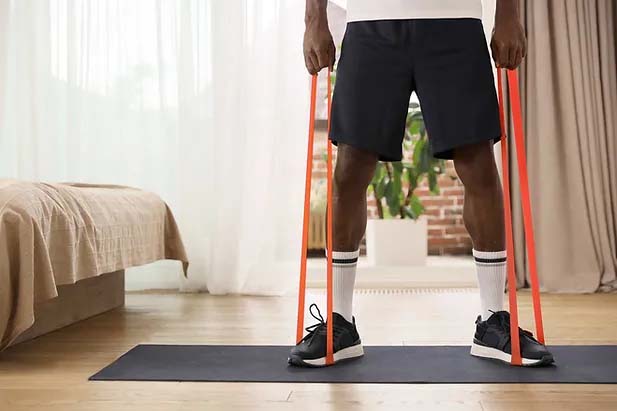Feeling discouraged about working out at home and staying in shape? Missing the gym and your normal routine? Don’t feel like you’re making a difference with your home-based workouts because you don’t have access to heavier weights or the equipment you like to use? Or are you scared of being injured with lifting heavier weights?
It’s hard to stay motivated and in a routine with all the changes happening around us lately. In addition, as more of us start working out at home, we are all looking for home workout equipment resulting in a huge shortage, or as the Physiotherapy Association of BC likes to call it, “the great dumbbell and kettlebell shortage of 2020”. If you’re itching to get back on track and work towards a healthier you, read on!

In 2016, a research group from McMaster discovered that strength and muscle size gains can be effectively achieved with lighter weights! In other words, you don’t actually need those expensive heavy weights you’ve had your eye on to get stronger. You’re probably wondering, “how can I achieve the same benefit without using the same equipment?”
The McMaster research group found that there were similar improvements in strength and muscle size with high rep, low weight lifting (20-25reps at 30-50% of 1 rep max) compared to low rep, higher weight lifting (8-12 reps at 75-90% of 1 rep max). However, if your goal is true maximal lifting capacity, or one repetition maximum, you should be using heavier weights to train.

Keep in mind, if you want to see changes in your strength and muscle size, the important variable is working to fatigue. You need to feel like your muscles could not lift many more repetitions safely even if you tried. You need to challenge your muscle capacity to reap the strength benefits. If you want some guidance in which muscle groups to strengthen and how to strength train safely, our Physiotherapists would be happy to help.

